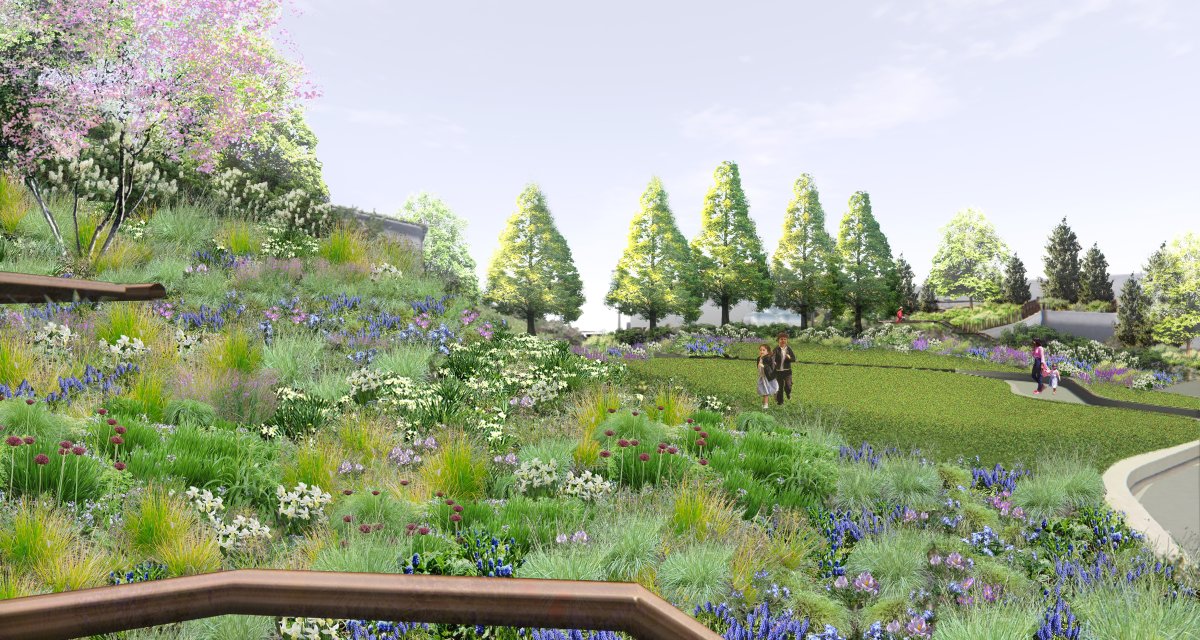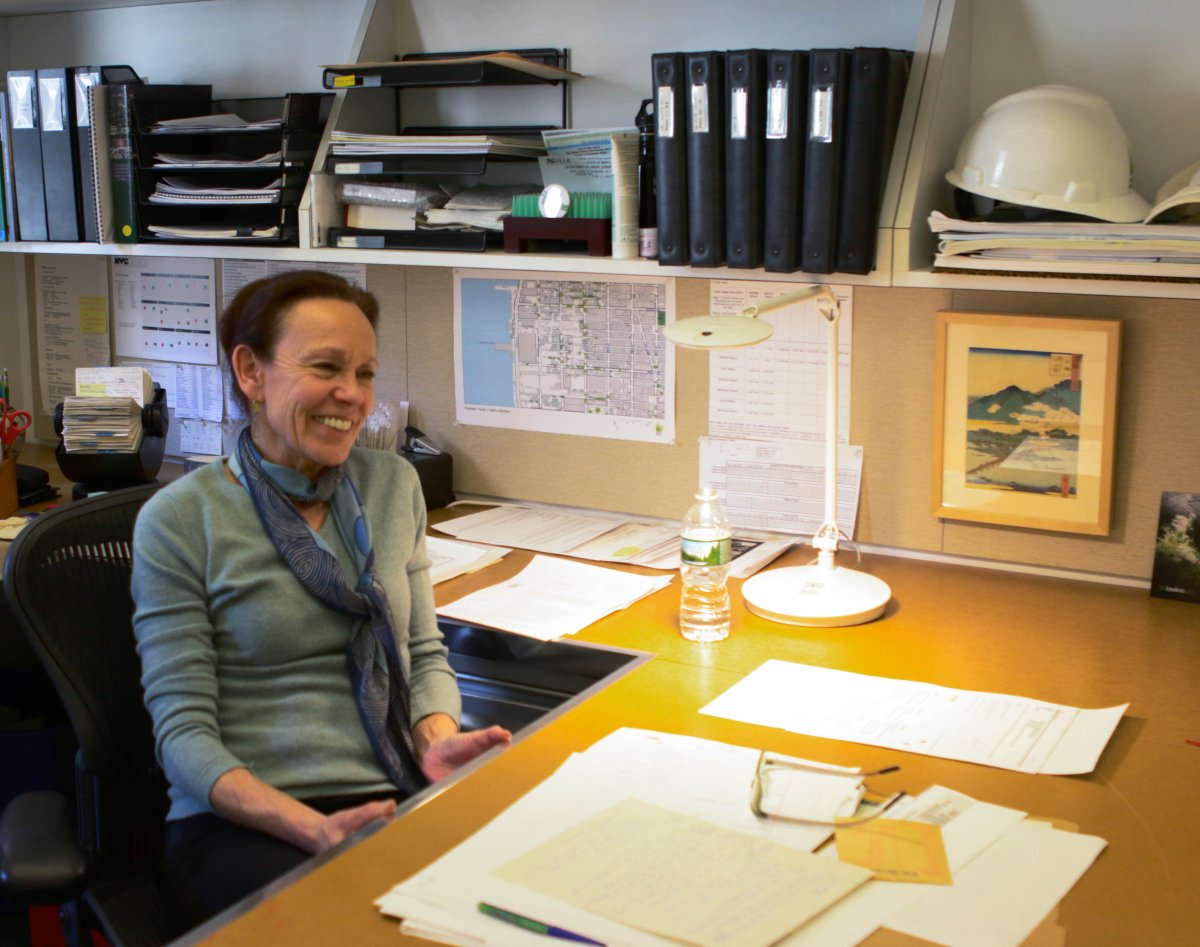
BY EMILY SIEGEL | The new Pier55 is planned to be a mecca for performers. In addition, its extensive landscaping offers the possibility for it to be a thriving natural habitat for pollinators.
A fortuitous moment led Pier55 landscape architect Signe Nielsen to realize that she was unintentionally creating a place for bees and other pollen spreaders, and she decided to run with it.
“As I began to look at the list of plants, I realized how many of them were pollinators,” she said. “I don’t want to say it was an afterthought, but it was not the driver.”
Once the realization was made, Nielsen decided to make pollinators a part of the entire plan. She selected only plants that were good pollinators, like aster and milkweed, and did research to make Pier55 a good habitat for people, as well as pollinators. First and foremost, the pier is for people, but Nielsen liked the idea of it being an environmental safe haven for insects with shrinking populations.
“With pollination comes bees, and some people are desperately afraid of them and people are seriously allergic to them,” she said. “So I think that while there’s a lot of enthusiasm for what it means, we also have to be cognizant of what that means in the context of a public space.”
The incorporation of a pollinator habitat into a New York City park is timely and necessary. The White House created the National Pollinator Health Strategy in 2015 to address the decline in pollinators and its negative effect on agriculture. Honey bees are the typical pollinator that comes to mind, but bats, beetles and butterflies also fall into this category. Part of the plan includes creating more pollinator habitats where these creatures can feed. Though small, Pier55 will be a pit stop where traveling pollinators can visit on their way to other destinations.

“When they’re going from a very productive habitat, one that’s very good for nesting, as they go from here to there, there are at least some way stations for them along the way for food or water,” Nielsen explained. “They’ll nest and breed in these sort of bigger, more commodious places, but they can’t make the travel distance without food and water.”
Nielsen has aligned this plan to accommodate pollinators with her overall artistic vision for the pier’s plant color scheme. She has timed the blooming of her selected flowers so that every two months there will be a transition of color. She has incorporated colors that are favorable to each type of pollinator. The gradation starts with pastels in the spring, then whites, yellows and blues, then oranges and yellows, and then russets and golds in the fall.
“This is not about it being a showy garden. It’s about it being a garden that’s really a beautiful place to be in,” she said. “It’s a place you want to be in and have ever-changing seasonal qualities.”
Nielsen has worked on environmental projects in the past, but this particular project is one where she can really flex her artistic and architectural muscles. Her role does not begin until construction is farther along, but she’s already itching to begin the process so that she can see the finished product.
“I hope it’s…actually I know it’s going to be very beautiful. It’s like having a child,” she said. “You’ve raised this thing, you’ve put it out there, you’ve done everything you can to give it the best gene pool and nurturing you can. But at a certain point it just has to walk on its own. But you still care.”
A lawsuit filed by the City Club of New York against the Hudson River Park Trust requesting that it do a full environmental impact review was recently dismissed, leaving a permit from the U.S. Army Corps of Engineers as the last step. The Army Corps approved the permit this Wednesday.
However, it was not immediately known if the City Club would appeal the decision. According to a spokesman for Pier55, construction is expected to begin this summer and will be completed by 2019.

















